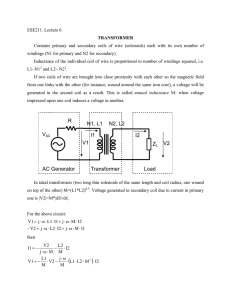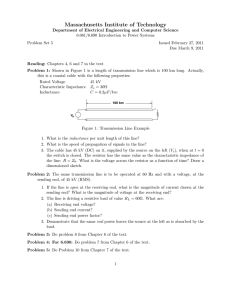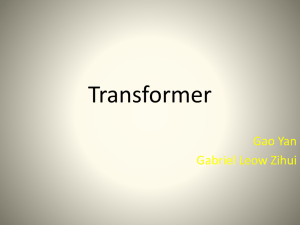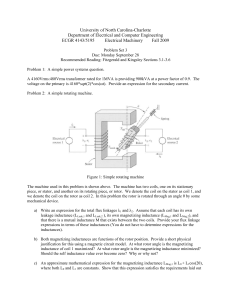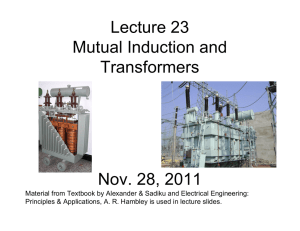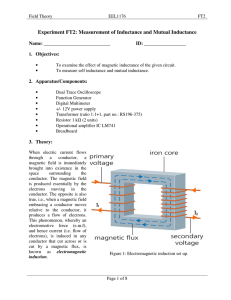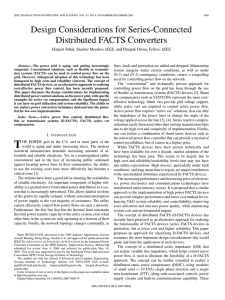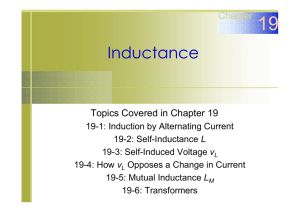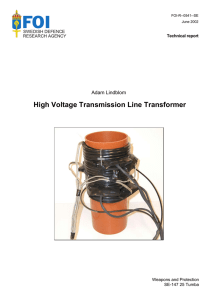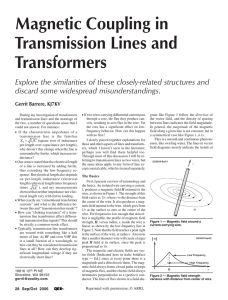lecture_20b
advertisement
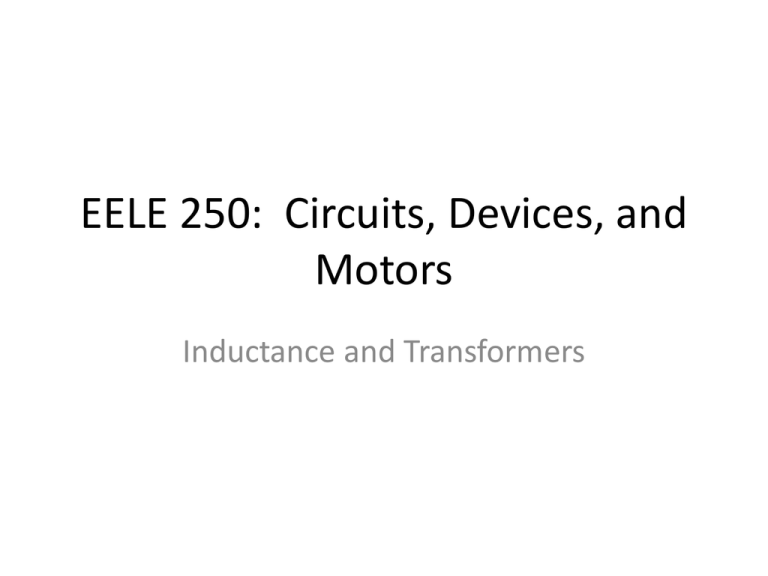
EELE 250: Circuits, Devices, and Motors Inductance and Transformers Assignment Reminder • • • • • Read Chapter 15 No quiz this week. • Practice problems: P15.7, P15.12, P15.37, P15.62, P15.63, P15.68 Lab #8 next week: MEET AT THE POWER LAB, EPS 119. Don’t go to your regular lab room, go directly to EPS 119. Faraday’s Law • Magnetic induction voltage: dλ e= dt This means that a voltage e is induced in a coil whenever its flux linkages are changing. • The induced voltage polarity opposes the change in flux linkages. Reluctance and Inductance • The reluctance of a path carrying a magnetic flux is l R= µA • • • • l is the path length A is the cross sectional area μ is the magnetic permeability of the material The inductance L = N2 / R = λ / i Mutual Inductance • Two coils wound on the same core share flux linkages. • λ21 flux links in coil 2 caused by current in coil 1 • λ12 flux links in coil 1 caused by current in coil 2 • Self inductance: L1 = λ11 / i1 and L2 = λ22 / i2 • Mutual inductance: M = λ21 / i1 = λ12 / i2 Mutual inductance (cont.) • Faraday’s Law: e = dλ/dt • For mutually-coupled coils: di2 dλ1 di1 e1 = = L1 ±M dt dt dt di1 dλ2 di2 e2 = = L2 ±M dt dt dt Dot labels: currents entering at the dots produce aiding fluxes Ideal transformer model N2 / N1 is the turns ratio v2(t) = (N2 / N1) v1(t) Transformer Equations • V2rms = (N2/N1) V1rms I2rms = (N1/N2) I1rms • A “step up” transformer (N2 > N1) takes the input AC voltage and creates a higher output AC voltage (with lower current) • A “step down” transformer (N2 < N1) takes the input AC voltage and creates a lower output AC voltage (with higher current) • Input power = Output power Impedance Transformation • Because the transformer exchanges voltage for current, or vice versa, the impedance viewed from the primary or secondary is also transformed. Impedance Transformation (cont.) N 2 ⋅V 2 1 N 2 V1 V2 N1 ⋅ ZL = = = I 2 N1 ⋅ I N1 I 1 N 1 2 → A step-up transformer (N2>N1) makes the attached impedance look “smaller” → A step-down transformer (N2<N1) makes the attached impedance look “bigger” 2 V1 N1 ⋅ Z L Z L′ = = I1 N 2
